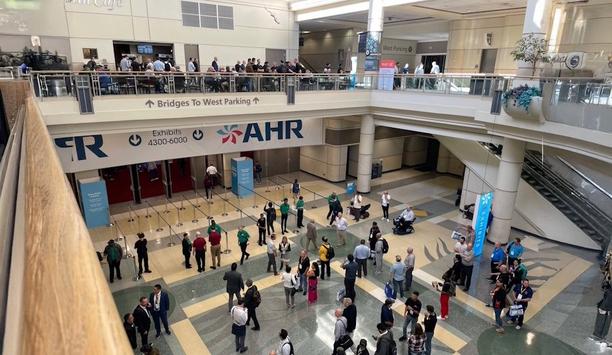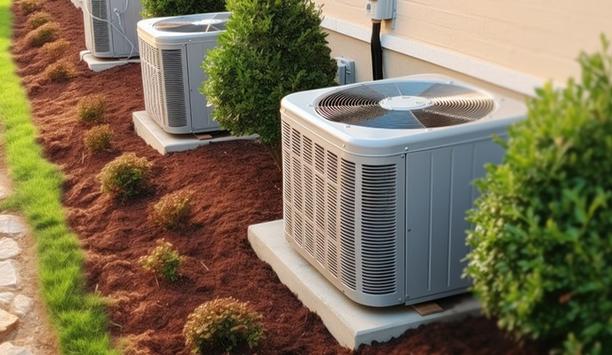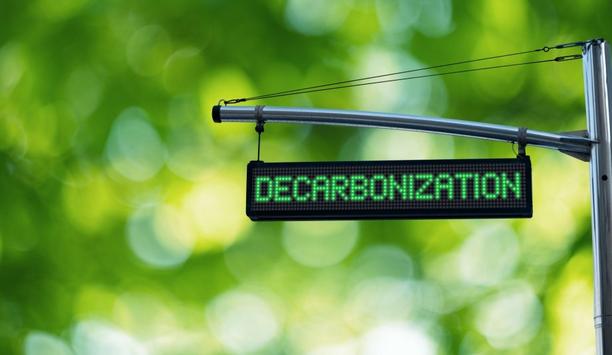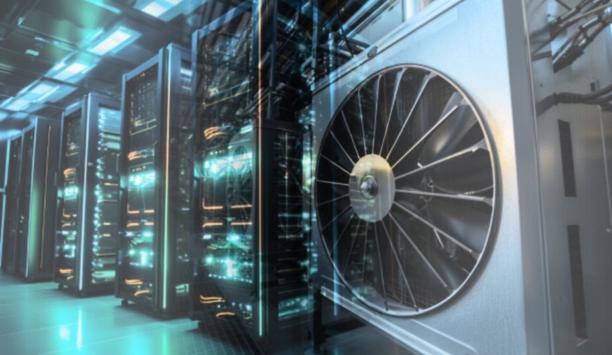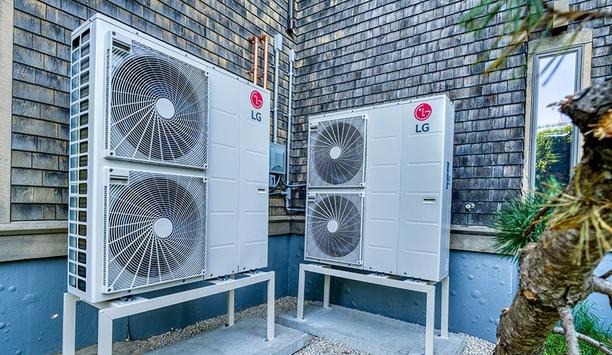Refrigerants - Editor's Note
Viessmann Climate Solutions (VCS) has combined with Carrier to become the core of Carrier’s newly formed business unit Residential and Light Commercial for European, Middle East and Africa. This business unit is now able to offer brands like Carrier, Toshiba, and Beretta next to the premium brand Viessmann, thus covering additional user segments with differentiated products at various price points. Climate system technology “The climate system technology of Viessmann Climate Solu...
Does anyone still think that heat pump technologies for residential applications are ineffective in cold climates? If so, they are missing opportunities available through advancements in heat pump technology. New developments in heat pumps are significantly transforming the residential HVAC market. These advanced heat pumps can maintain 100% heating capacity at 0 degrees F and operate efficiently at low temperatures. Secondary heat sources These capabilities reduce the need for secondary hea...
The HVAC Industry gathered in Orlando for AHR Expo 2025, focusing on the latest advancements in technology. Attendees included contractors, manufacturers, engineers, system design professionals, facility managers, architects, wholesalers, and distributors. This year’s expo highlighted game-changing innovations, regulatory shifts, and emerging trends designed to enhance efficiency, sustainability, and connectivity. For HVAC professionals, these developments translate into practical soluti...
Certifications are official documents given by professional organizations that confirm a staff member has the necessary knowledge and skills needed to do a specific job. In the HVAC industry, certifications provide multiple benefits for various stakeholders. For technicians, certifications can demonstrate enhanced skills and knowledge, increase earning potential, improve job security, and promote greater credibility and professionalism. Certified technicians In the long run, using certified...
The U.S. Department of Energy (DoE) Commercial Heat Pump Accelerator program is designed to enhance building efficiency and electrification. Running from 2024 through 2027, the program aims to overcome adoption barriers, promote advanced heat pump technologies, and create sustainable solutions for HVAC professionals. Compared with conventional packaged rooftop units (RTUs) with natural gas heating, heat pump RTUs are estimated to reduce greenhouse gas emissions and energy costs by up to 50%. F...
Hydronics systems rely on water, steam, or water solutions to distribute heating and cooling throughout a building. They are inherently more eco-friendly than conventional alternatives. First and foremost, using water as a temperature regulation method is a natural choice. There is no carbon footprint involved in its creation, and there is no inherent danger in exposure to water in the event of a system failure. Water is more efficient at carrying heating and cooling loads than other technolog...
Integrating technology, data, and a nationwide network of contractors and distribution centers, Motili seeks to transform how HVAC services are delivered. With a focus on sustainability, energy efficiency, and cost savings, Motili helps property owners and contractors achieve their goals while promoting a greener future for the HVAC industry. motili expansion Motili meets various industry needs, whether a property manager looking for streamlined HVAC solutions or a contractor seeking m...
Gaining early popularity in the 1970s, previous generations of heat pumps were only considered useful in mild climates. But today, modern heat pumps, especially variable-speed mini-split heat pumps, are reliable, sustainable, and used in various ways, including ways our parents and grandparents would never have thought of. New uses include she sheds, man caves, garages, tiny homes, sunrooms, and even boats. We spoke to Sean Gallagher, Regional Sales Manager, Eastern Massachusetts, Mitsubi...
Johnson Controls’ Advanced Development Engineering Center (JADEC) in New Freedom, PA., about 25 miles from Philadelphia, highlights and demonstrates the company’s capabilities related to development, testing and manufacturing. The 357,000-square-foot facility is an advanced engineering and testing facility for water-cooled chillers, air-cooled chillers, air handlers, compressors, and heat pumps. Much of the development in the facility centers on advancements in a critical vert...
TE Connectivity’s main product categories for the HVAC market are power interconnects, signal interconnects, magnet wire for motors, and heat-shrink tubing to seal against environmental factors. component materials The company works with HVAC original equipment manufacturers (OEMs) to solve challenges such as harsh environments, safety, and power and signal usage. Although components are a “small” element when an OEM assembles an HVAC system, their impact can be big. For exa...
SNAP Rule 26 marks an important milestone in the transition from commercial refrigeration to new refrigerants. The rule lists refrigerant substitutes that provide a spectrum of technological solutions to meet required performance, global warming potential (GWP), safety, and environmental standards. SNAP stands for Significant New Alternatives Policy, a program by the U.S. EPA (Environmental Protection Agency) under the Clean Air Act. In general, the program aims to evaluate and regulate...
It takes a proliferation of data centers to serve the growing computing needs of the Internet, and all those servers churning away create plenty of heat. Might some of that heat be harnessed and used for residential or commercial heating? The emergence of district heating systems, which provide thermal energy to multiple buildings from a single source, demonstrates the approach has broad possibilities. Air-cooled chillers and air-handling units used to cool data centers are like the technologi...
Recently, nine states pledged to accelerate the transition to clean buildings in their states, including a goal of deploying heat pumps to make up 65% of residential heating, cooling, and water heating by 2030. California, Colorado, Maine, Maryland, Massachusetts, New Jersey, New York, Oregon, and Rhode Island signed a memorandum of understanding in February outlining their collective efforts to accelerate the deployment of clean technologies such as heat pumps in new and existing homes. ...
The flammability of the new class of low-GWP refrigerants is a source of misunderstanding and unnecessary anxiety among contractors who will be working with the newer materials, which must be used by HVAC equipment manufactured beginning Jan. 1, 2025. A2L refrigerants The newer A2L refrigerants, specifically R-454B, perform similarly to previously used materials such as R-410A, and flammability is so mild as to be almost negligible. What’s needed is more education to make co...
The idea of Energy as a Service involves shifting the traditional business model from selling energy as a commodity to providing a comprehensive package of goods and services to address a customer’s energy use and management. Rather than selling energy, the approach encompasses complete stewardship of a company’s energy needs in exchange for a monthly fee. Because 40% or so of a company’s typical energy needs are related to heating and cooling systems, implementing Energy as...
AHR Expo 2024 was abuzz with activity, befitting a dynamic industry in the throes of change. Industry developments such as electrification and the refrigerant transition render business opportunities on the AHR Expo show floor, where exhibitors display a determination to meet the challenges and thrive in the process. Walking from booth to booth during the three-day show in Chicago, I saw the best the HVAC industry has to offer, up close and personal. Innovation and adaptability are the w...
Businesses in the HVAC market were high-profile participants at the COP28 conference in Dubai. Several big HVAC companies had a presence at the conference, and the industry’s technologies are an important tool to achieve the conference’s stated climate goal of net-zero global greenhouse gas emissions by 2050. COP28 The Conference of Parties of the United National Framework Convention on Climate Change (COP28) took place Nov. 30-Dec. 12 in Dubai. Some 35,000 people were involved in...
Revised building codes, based on model “I-Codes” developed by the International Code Council (ICC), are being widely adopted to allow A2L refrigerants to be used in comfort air conditioning applications. Previously, the use of A2L refrigerants, which are “mildly flammable,” was not allowed by building codes in force in 2021 and before because of safety concerns. benefits of A2Ls However, the benefits of using A2Ls instead of refrigerants with higher global...
The transition away from hydrofluorocarbons (HFCs) as refrigerants for HVAC systems is well underway, and the process is accelerating. A 10% reduction in HFC production was mandated last year, and an additional 30% reduction is pending in January 2024. Meanwhile, a January 2025 deadline looms for the elimination of the manufacture of HVAC equipment that uses refrigerants with high potential for global warming (GWP). impact of regulatory shifts The production step-downs ensure a co...
The steps toward building decarbonization will accelerate organizations’ net-zero journey. Taking steps will also reduce operational costs and deliver better indoor environments. Improvements in heat pumps and digital solutions have enabled these opportunities and, as they continue to advance, deeper and deeper building decarbonization will become achievable. Optimal solutions Mark Lessans, Senior Director of Sustainability and Regulatory Affairs, Johnson Controls, for insights into how...
The American Innovation and Manufacturing (AIM) Act is among the environmental initiatives and regulations driving the phasedown in the use of hydrofluorocarbon (HFC) refrigerants in the HVAC industry. The AIM Act’s schedule seeks to phase down HFCs by 85% by 2036. The first significant reduction in consumption and production under the AIM Act began on Jan. 1, 2022, representing a 10% reduction from a baseline value. The next major step begins Jan. 1, 2024, with an additional 30% reductio...
Data centers have been around as long as the Internet, although the introduction of the iPhone in 2007 significantly increased the demand for data centers. When the COVID pandemic required more people to work from home, the impact was to push digital demand to even higher levels. In short, as of 2023, it is a challenge to build data centers fast enough. environmental aspects Thousands of computer servers operating in a data center give off a lot of heat, so cooling is a critical need. A typi...
The 486,805 square feet of exhibit space at AHR Expo 2023 in Atlanta provided clear evidence of how technology innovation in HVAC has accelerated in the last decade. Change and progress were everywhere among the 1,779 exhibitors, including 425 international exhibits. HVAC systems on display New electronic tools, cloud-based solutions, higher efficiency ratings, mini-split systems, new regulations, and new control strategies are driving product development enabling HVAC systems to deliver new s...
From supply chain challenges to decarbonization, from data analytics to maintenance programs, the themes that ranked highest among visitors to HVACinformed.com in 2022 reflected the dominant topics of conversation throughout the industry. As demonstrated by the most-read articles on the site, technology trends and regulatory issues all converged and had a profound impact on the industry in 2022. Timely and important issues in the HVAC marketplace dominate HVACinformed.com‘s list of most-c...
The HVAC market is at an inflection point, in the throes of switching refrigerants to meet regulatory goals, improving energy efficiency to meet more stringent standards, and struggling with supply chain issues. What the industry needs is a new technology at the nexus of environmental issues and energy conservation, enabling the drive away from fossil fuels and toward zero-carbon emissions. Blue Frontier is working to bring such a system to market with a core air conditioning/energy storage tec...
The U.S. Department of Energy (DoE) has challenged manufacturers to accelerate the development of heat pumps that can perform well in colder climates. As part of its Initiative for Better Energy, Emissions, and Equity (E3 Initiative), the DoE’s Residential Cold Climate Heat Pump (CCHP) Technology Challenge seeks to demonstrate performance in the lab and at pilot sites before implementing new technologies in the market. Nominal capacity requirement To meet the DoE CCHP Challenge, a heat...
The looming deadline for HVAC compliance with new U.S. Department of Energy minimum performance requirements could cause disruptions in the construction trade as builders struggle to install existing stock and resolve other ‘logistical issues’ before time runs out. The new performance standards for all newly manufactured residential and commercial air conditioners, heat pumps and gas furnaces will take effect Jan. 1, 2023. Revised testing protocols will also apply. Supply chain di...
California is moving to ban the sale of natural gas furnaces, heaters and water heaters by 2030. It is the first US state to make the move, in order to meet federal ozone standards. In addition to California’s previous efforts to eliminate installation of gas-fueled equipment in new buildings, the new regulation will address the use of gas space heaters and water heaters in existing residential buildings. When it comes time to replace them, building owners will be required to transition...
Certification is a way to demonstrate professional knowledge, a specific skillset, and the ability to do a particular job. In the HVAC market, earning certifications provides benefits to contractors as well as technicians. Paying for certifications Historically, typically 70% of technicians paid for their certifications. Now the numbers have flipped, and about 70% of contractors currently pay for certifications because they see the value-add they can provide to keep employees with an organizat...
High outdoor temperatures are a great indicator of demand for HVAC services, and HVAC companies are feeling the heat as they struggle to meet higher demand for services even as they face unprecedented supply-chain challenges and a critically tight labor market. HVAC contractors across the country agree that demand this summer is higher than ever. The phones are ringing off the hook, and HVAC employees are working long hours just to keep up. Some are working 12-hour days and on the weekend. The...
From A To L: Your A2L Transition Guide
DownloadLeveraging Radiant And Hydronics To Help Achieve Decarbonization Goals
DownloadSealed Connectors In Harsh Environments
DownloadPowering And Cooling Next Generation Data Centers
DownloadDebunking Myths To Promote A Bright Future For Heat Pumps
Download

